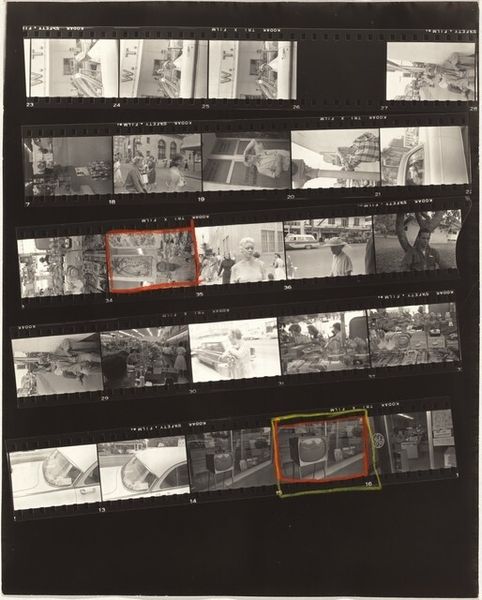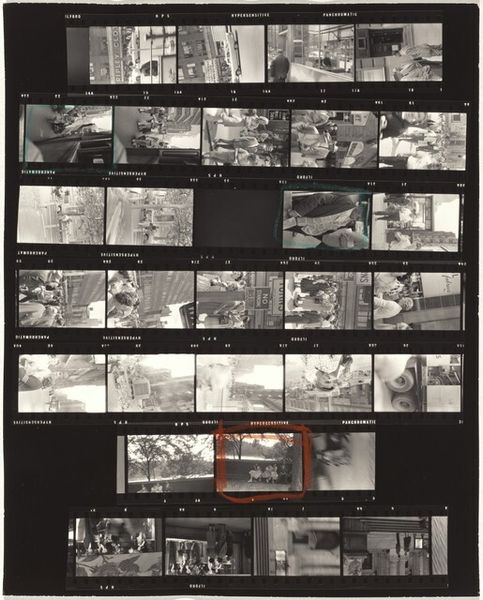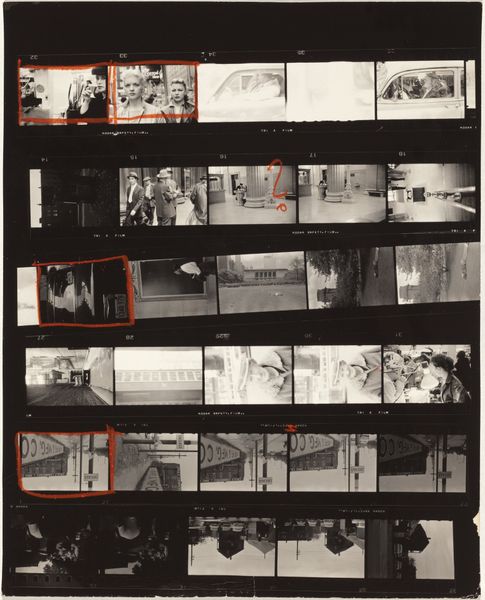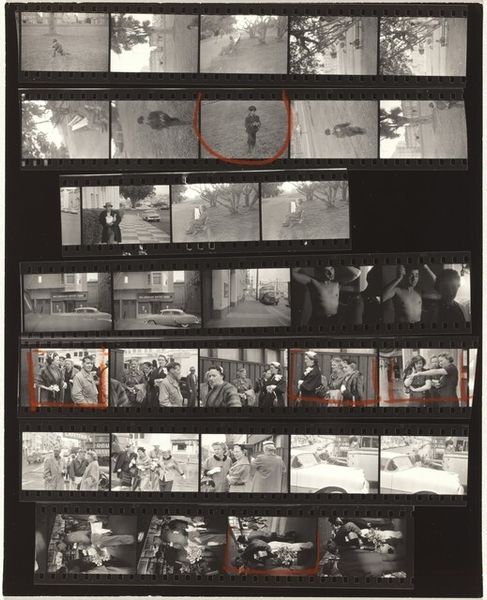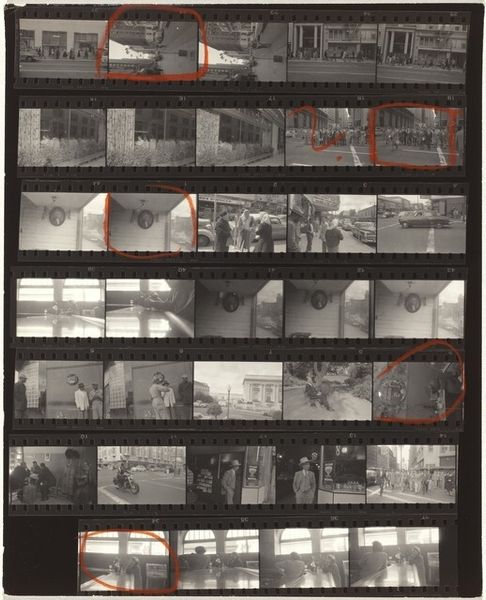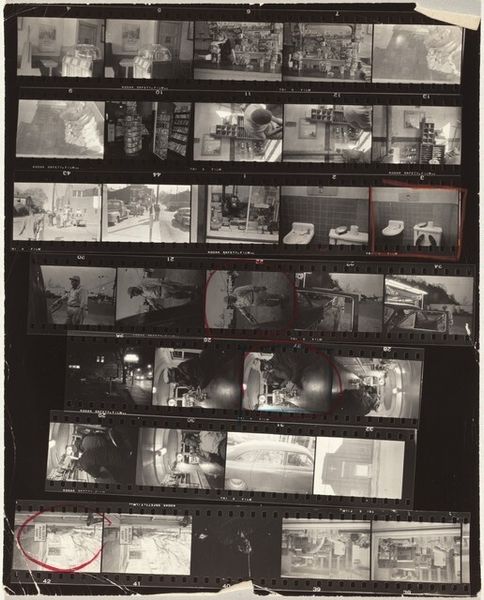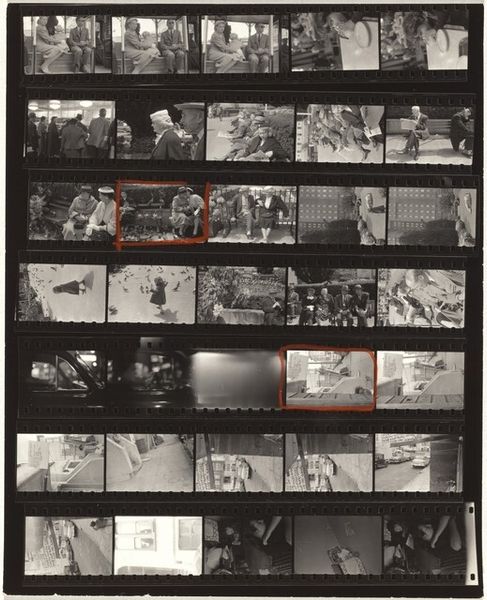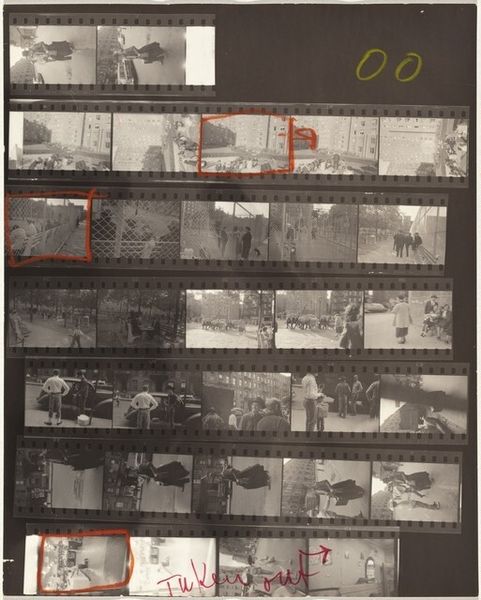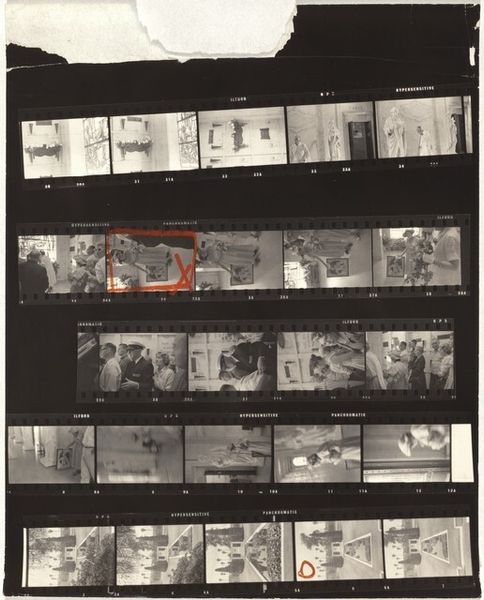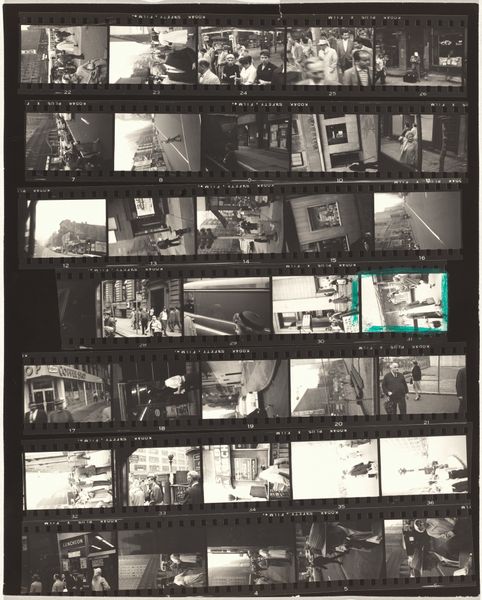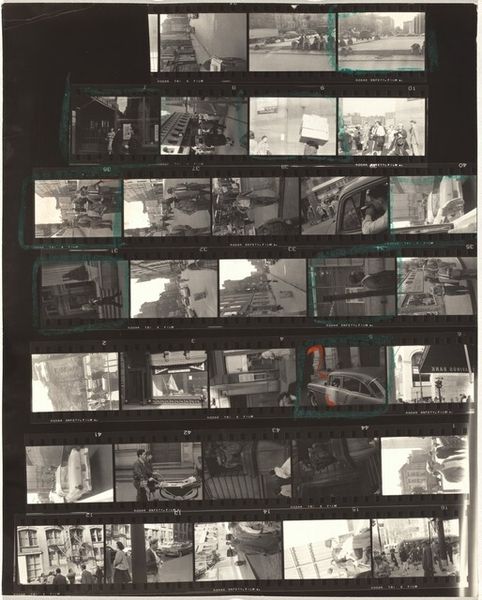
photography
#
abstract-expressionism
#
film photography
#
figuration
#
street-photography
#
photography
#
culture event photography
#
cityscape
#
film
#
modernism
Dimensions: overall: 25.3 x 20.2 cm (9 15/16 x 7 15/16 in.)
Copyright: National Gallery of Art: CC0 1.0
Editor: Here we have Robert Frank’s “Guggenheim 116/Americans 27--New York City,” possibly from 1955, a photography piece showcasing frames of a film. What strikes me is the raw, almost chaotic arrangement of these images – it feels like a glimpse into a stream of consciousness. What’s your take on this work? Curator: Frank’s contact sheet offers more than just photographs; it’s a political statement disguised as street photography. Each frame whispers stories of a post-war America grappling with its identity, consumerism, and racial divides. How do these fractured images speak to you about the American Dream, or perhaps, its unfulfilled promises? Editor: That's insightful! I initially saw chaos, but you're pointing to something deeper—a critical commentary. The varying scenes, from mundane cityscapes to candid portraits, create a fragmented narrative. Do you think Frank intentionally chose this medium to reflect that sense of fragmentation? Curator: Absolutely. Frank’s choice to present these images as a film strip disrupts traditional photographic narratives. It’s almost like he's saying that the "truth" of America isn't a single, clear image, but a collection of imperfect moments. Think about how this resonates with the Civil Rights movement brewing during this time. What stories might these seemingly random frames be trying to tell us about power, visibility, and exclusion? Editor: So it's not just a collection of images, but a deliberate challenge to the status quo. It makes you wonder what he was trying to say about who gets seen and who is left out. Curator: Precisely. And the roughness of the film strip itself, the imperfections, becomes a vital part of the message. It reminds us that history is never clean or simple, but a complex and often contradictory narrative pieced together from fragments. What have you discovered about this artwork by considering these ideas? Editor: I came in seeing a chaotic collection, but I’m leaving with a sense of how the arrangement critiques America, prompting discussions about who is included and who isn't. Curator: Exactly, seeing is only the first step. Understanding demands a look at who and what shapes these images.
Comments
No comments
Be the first to comment and join the conversation on the ultimate creative platform.
